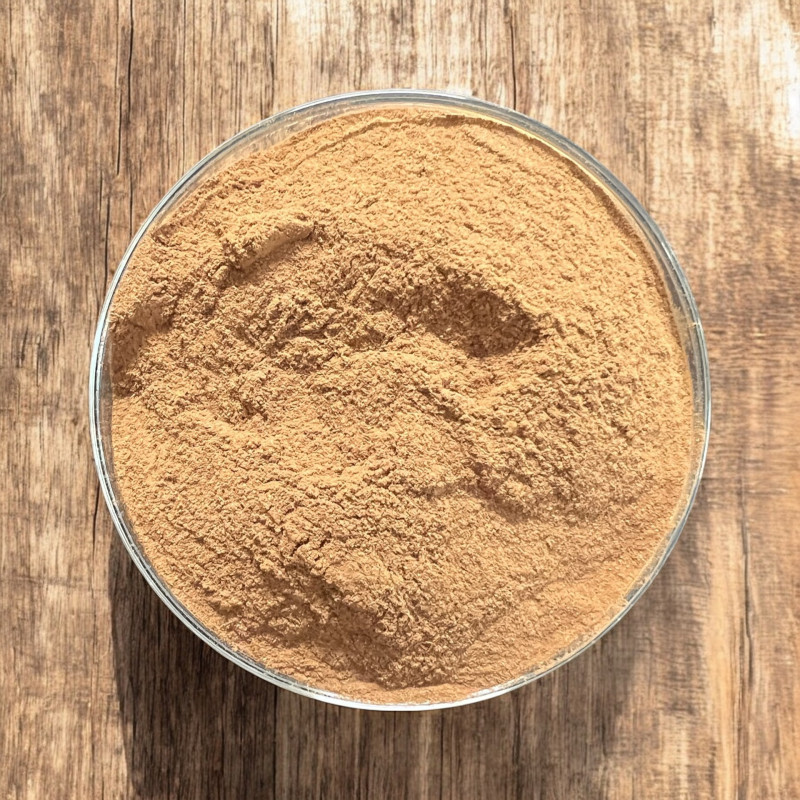
Reference: 3N7137901


This is the so-called "Ceylon" cinnamon, finely ground into a particularly smooth powder.
It will be a delight to flavor your fruit tarts, pastries, jams, compotes, yogurts, and all your other desserts.
 Delivery
Delivery
Mondial Relay
 Returns
Returns
See conditions
 Payments
Payments
100% secure
Livré en sachet refermable
Uses in Cooking and Beyond:
This cinnamon, with its smooth, sweet flavor and delightful aroma, and its fine flour-like texture, is particularly well-suited for dessert preparation!
In the kitchen, cinnamon pairs wonderfully with apples, apricots, and nearly all fruits, whether in compotes, pies, or jams. It also adds depth to chocolate, liqueurs, and spirits (like mulled wine, hypocras, punch, and spiced rum). It sweetens coffee and blends beautifully with teas.
For liquid-based preparations like alcohols, ground cinnamon works well, but I prefer whole cinnamon, which you can crumble as needed. Whole sticks leave no residue in liquids, avoiding the need for filtering.
Cinnamon is also a key ingredient in Oriental tagines and many Indian dishes. It’s inseparable from spice blends like the "five-spice" mix (Asian cuisine) and "four-spice" mix (for stuffings and pâtés), as well as gingerbread spice blends.
Some studies suggest that cinnamon has numerous interesting medicinal properties.
Who am I?
Origin: Madagascar
Scientific name: Cinnamomum
Cinnamon is derived from the inner bark of the cinnamon tree, a species in the Lauraceae family (the same family as bay laurel). Today, the tree is cultivated in warm regions around the world.
The flavor of cinnamon comes from the aromatic oil contained in the wood of the tree. The part used for cinnamon is the thin inner layer of the bark, which must be scraped by hand. For whole sticks, the bark is rolled and dried. The work involved in producing each cinnamon stick is considerable! Ground cinnamon is simply pulverized from this inner bark.
A Little History:
The Chinese have been harvesting cinnamon since ancient times. It has been known since antiquity, used by the Egyptians in the embalming process.
Cinnamon didn’t reach France until 1220, and it appears in the famous medieval spiced drink known as "hypocras."
Data sheet
 Charles B.
Charles B.
Bon produit

 Charles B.
Charles B.
Bon produit

Reference: 3N7137901
Reference: quatreepices
Reference: EPI230204
Reference: badianeM
Reference: EPI230204
Reference: verveine
Reference: 3N7137901
Reference: 1N7004306
Reference: 6N7456401
Reference: bergamote
Reference: 6470
Reference: 10N7738802
Reference: SPW06600
Reference: camomilleRom
Reference: 26545D
Reference: 108017302
Reference: 7N7525705
Reference: 10M6821604

This is the so-called "Ceylon" cinnamon, finely ground into a particularly smooth powder.
It will be a delight to flavor your fruit tarts, pastries, jams, compotes, yogurts, and all your other desserts.